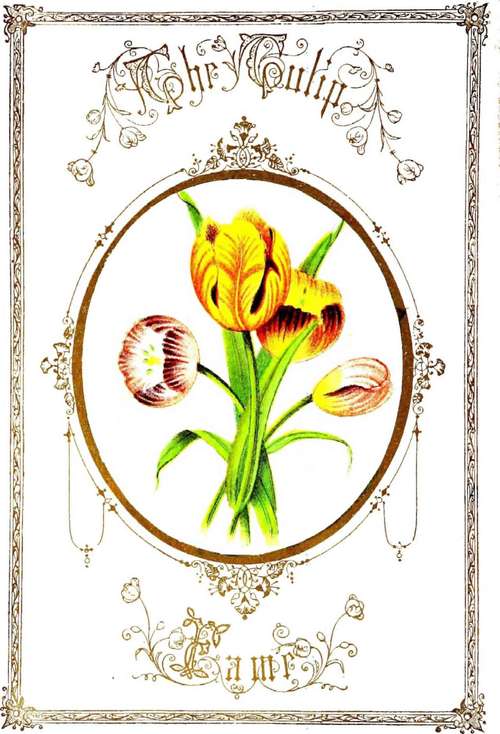The Tulip
Description
This section is from the book "Garden Flowers". Also available from Amazon: Garden Flowers (1857 ).
The Tulip
Gat, gaudy, obtrusive, the Tulip cannot lay claim to grace or modesty; neither does it compensate for the absence of these by sweet perfume. Nevertheless, the tulip fills its appropriate place in nature. There are conditions of the beautiful wherein excessive brilliancy of colouring is essential to the attainment of perfection. Thus the brilliant red that rests upon the lip of beauty adds to the lustre of the brow and neck of snow ; so the Tulip, andó
" Those flowers that shine in nature's brightest hue, Whose petals flaunt in scarlet, gold, and blue," lend an additional charm to the flowers of more delicate tint by which they are surrounded, and, like discords in music, blend the floral universe into a harmonious whole.
In the East, the Tulip is the emblem of inconstancy; but it is also the symbol of the most ardent affection. Its petals are compared to fire, and the yellow heart to brimstone; and, when an enamoured swain presents one to his mistress, he would have it understood that the effect of the fair one's beauty upon him is to set his face on fire, and reduce his heart to a coal! In our own language of flowers, it signifies a declaration of love. The gorgeous and variegated colours of the Tulip seem to have made a deep impression on the mind of Orientals, insomuch that they almost worship it. Formerly, feasts of the most magnificent character were given in the seraglio of the Grand Seigmor in honour of this flower, the description of which reminds one vividly of those magnificent displays recorded in the Arabian Nights, where galleries and marble halls, golden ottomans and crystal vases, domes and minarets, opals, emeralds, sapphires, diamonds, and rubies, combined to seduce our youthful fancies into witching scenes of enchantment. At those feasts the praises of the Tulip were sung in the wild strains of eastern poetry, and vases filled with specimens of the richest and rarest description crowded the halls.
About the year 1644 a most extraordinary and altogether unaccountable tulipomania took possession of the inhabitants of Holland, and prices of almost fabulous amount were eagerly paid for a single root. The most precious plant was named Semper augustus. It was valued at 2000 florins ! and they pretended it was so rare that only two specimens were known to be in existence, one at Amsterdam, the other at Haarlem. So much as 4600 florins was offered for one root during the prevalence of this mania, which lasted for several years, and one man gave twelve acres of land for another root!

Continue to:
- prev: The Daisy
- Table of Contents
- next: The Snowdrop
